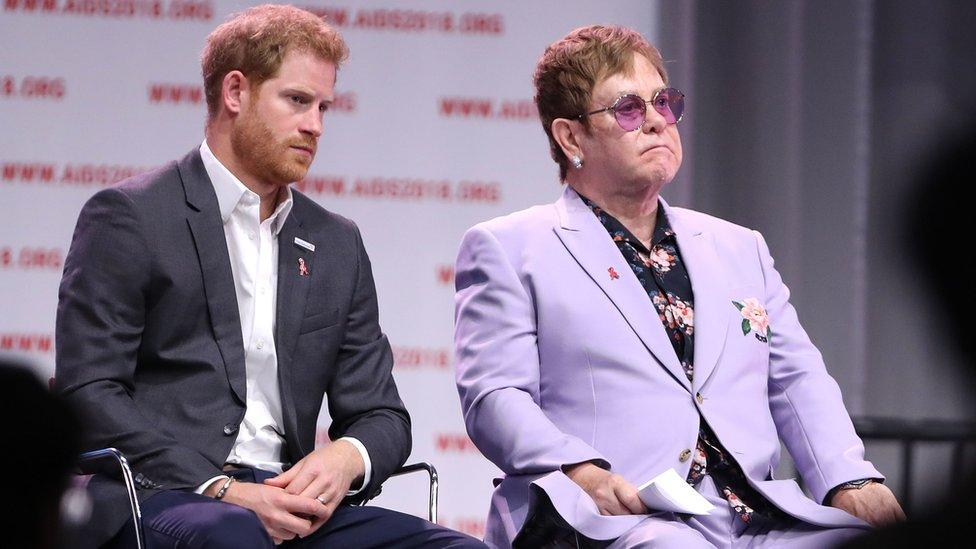Royal Family: From costs to carbon, how do they travel?
- Published
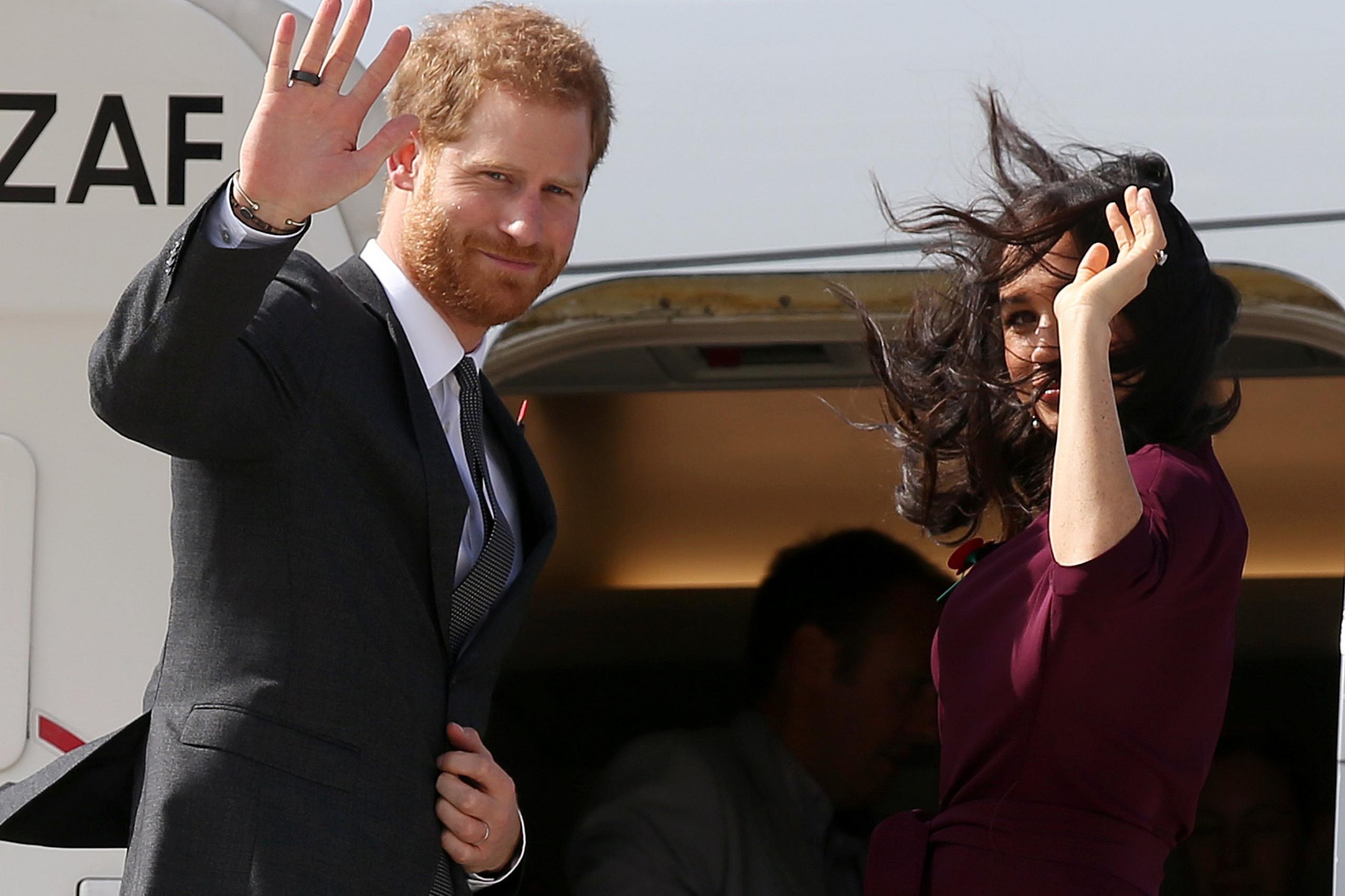
Prince Harry and Meghan depart Sydney for New Zealand in October 2018
The image of the Duke and Duchess of Cambridge stepping onto a budget flight contrasted somewhat with the Duke and Duchess of Sussex's travel this summer.
Prince William and Kate's cheap hop on Flybe from Norwich to Aberdeen was compared unfavourably by critics to Prince Harry and Meghan's trips by private jet.
But who decides how the Royal Family travels? And how much do they spend getting about?
Official v unofficial
While the costs of official royal trips are published online in annual reports, the amount the royals spend on unofficial travel is not.
Spending on official travel, which is paid for by taxpayers, was £2.7m overall last year. Of trips costing more than £15,000, Prince Charles spent the most.

Tradition dictates that what the royals spend in their own time is up to them and so we only know what gets reported, often by chance.
Kensington Palace would not comment on the cost of the Cambridges' personal travel after they were snapped boarding their budget flight this week. Reports said tickets cost as little as £73.
Meanwhile, Sir Elton John said he lent his private jet to Prince Harry and Meghan to ensure their privacy on a recent visit to his French estate.
Phil Dampier, who has written several books about the royals, said he expects that gifts of flights - which can total tens of thousands of pounds - may need to be disclosed in future.
"I think what will have to happen in future is that any flights given to them by the likes of Elton John or any benefactors they'll have to declare," he said.
Helicopters are preferred
When travelling in an official capacity, the royals make use of chartered helicopters far more than private jets.
Figures published by the royal household showed, external that 207 trips by helicopter were made last year, compared with 56 flights on specially-chartered planes.
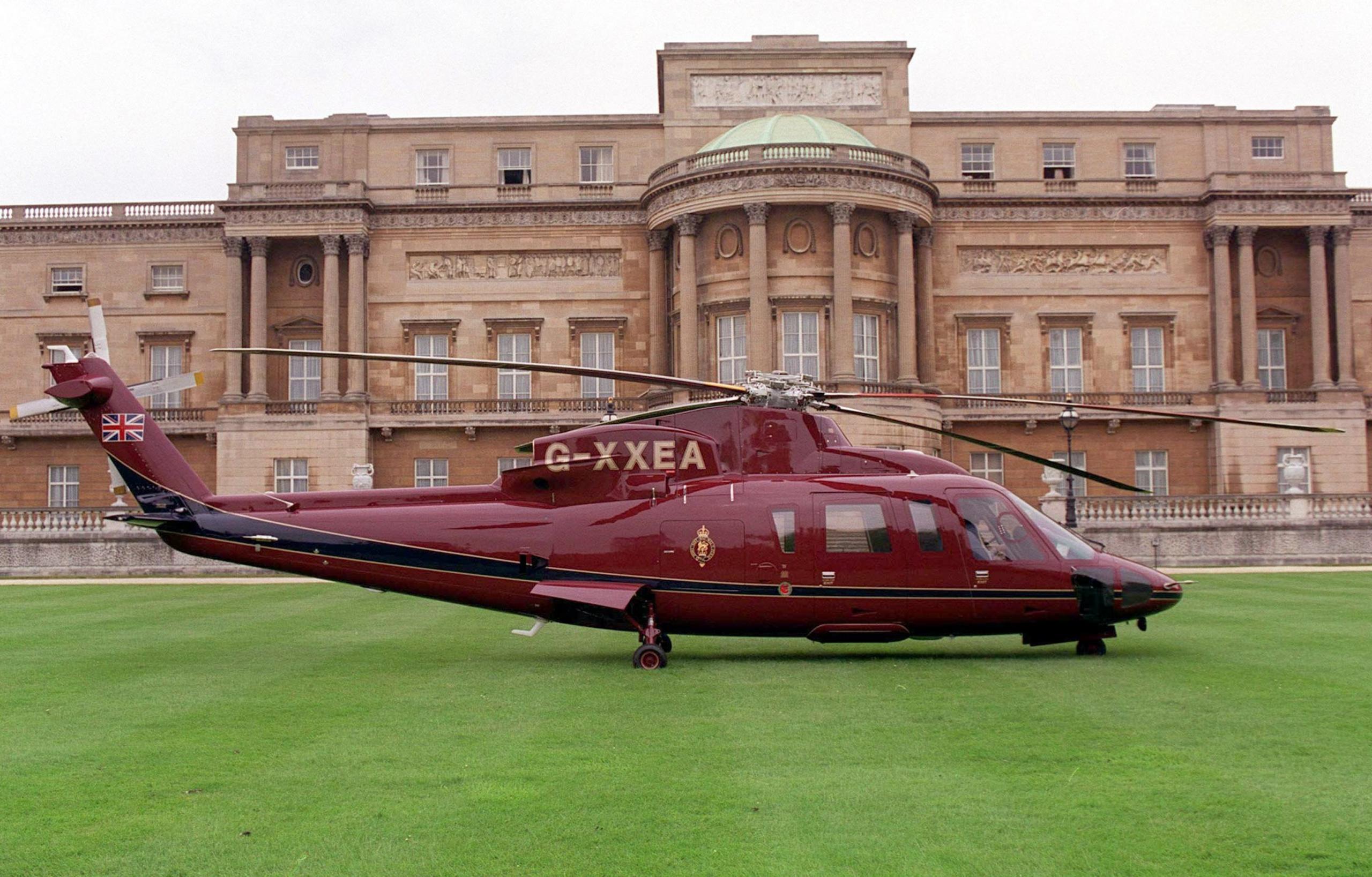
The introduction of a royal helicopter operated by a civilian crew saved thousands of pounds
The vast majority of the helicopter trips were short hops and cost less than £15,000 each, the accounts showed.
But the royals almost exclusively use chartered planes when travelling abroad.
Among the more expensive trips taken was the Prince of Wales and Duchess of Cornwall's official visit to the Caribbean Islands and Cuba aboard RAF Voyager which cost £416,576.
Costs have plummeted
Despite the seemingly high costs, royal travel still costs a lot less than it did a few decades ago.
According to the National Audit Office (NAO), official royal travel costs declined by 76% in real terms between 1991-2 and 2011-12.
The NAO said that was because the household switched from using RAF helicopters to a civilian service and by taking fewer flights on more expensive planes.
Official royal travel is paid for by the Sovereign Grant, funded by the taxpayer.
This year, the grant - which also pays the Queen's household staff and upkeep of palaces - is expected to be £82.4m in total.
Last year, the money spent on official royal travel (£2.7m) was roughly the same as the previous two years. In 1997-98, the equivalent figure was £17.3m.
It's not all about money
The decision to charter a special plane or fly on a commercial flight is often taken by senior royal staff in conjunction with government, according to a former head of royal protection.
Dai Davies, who led palace police in the 1990s, told the BBC: "Convenience in terms of the routes, the number of the visits, the timings, and in some parts of the world the need for security [are all considered]".
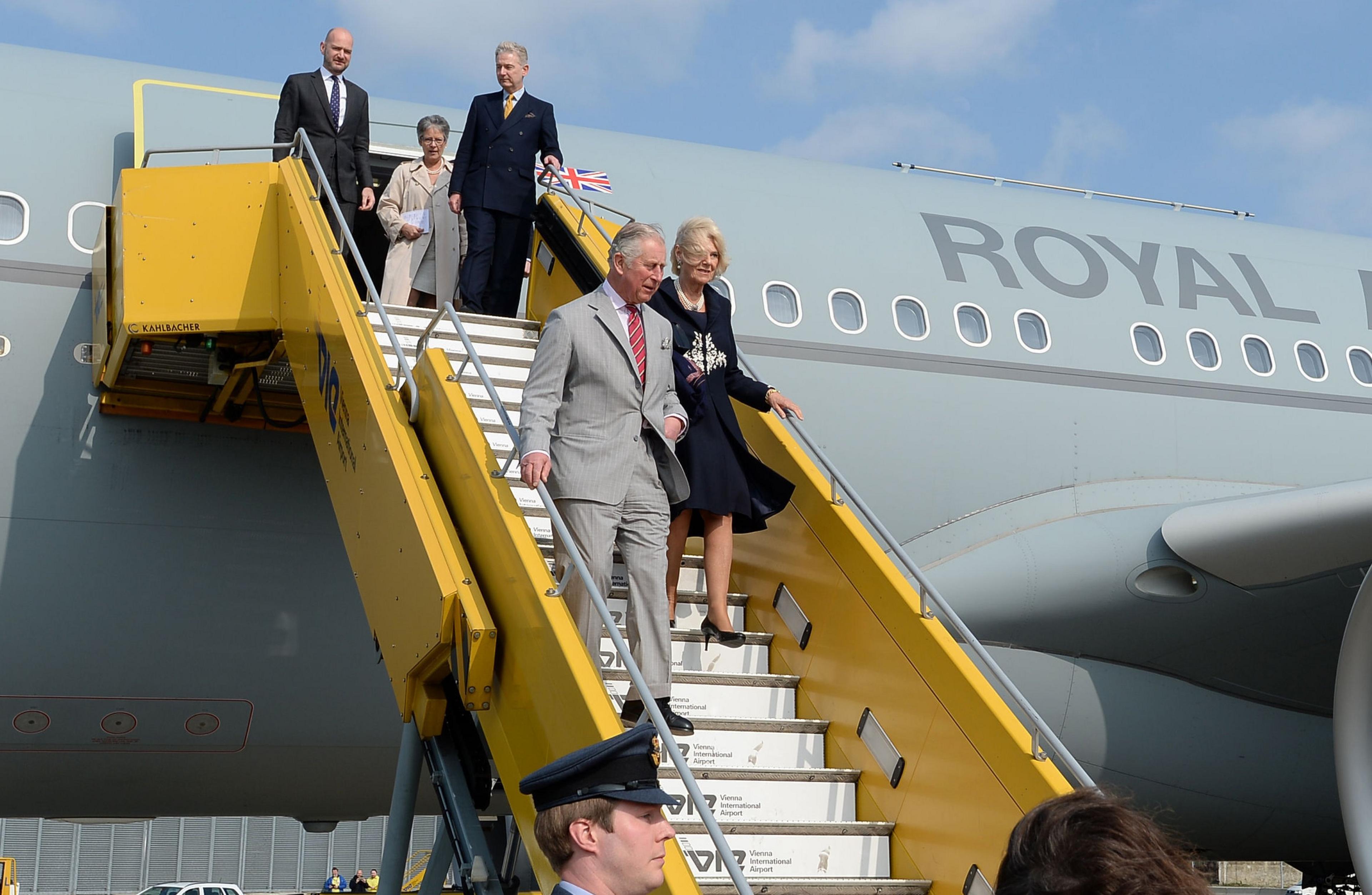
Prince Charles and Camilla arrive in Vienna after a flight on a RAF Voyager plane
But the suggestion, made by celebrities who came to the defence of Prince Harry and Meghan, that the couple are not safe flying on a normal airliner was untrue, Mr Davies added.
"It's absolute nonsense in terms of security," he said.
'More Travelodge than palace'
For trips closer to home, the royal train is still used by senior members of the Royal Family, despite the current stock dating back to the 1970s and it costing more per mile than a plane.
The train was most recently used by the Queen in March 2019, when the monarch slept on it overnight before an early visit to Somerset. Her combined train and helicopter for that trip cost £21,230.
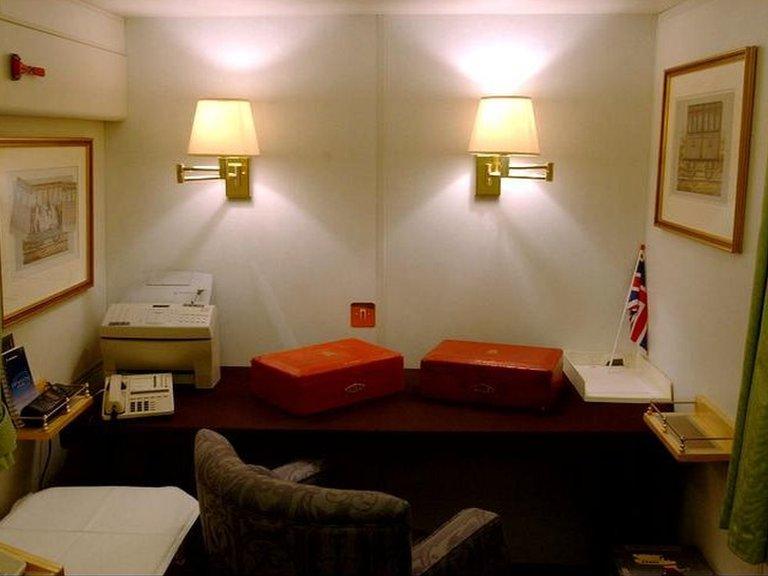
The interior of the royal train has been likened to a Travelodge
Yet the train costs much more per mile than chartered flights.
A September 2018 trip by the Prince of Wales from Aberdeen to Euston cost £22,086, around £40 a mile, but a similar journey by the Queen on a chartered flight in October 2018 cost £17,689, or £32 a mile.
Courtiers have argued that using the train reduces the need for costly and disruptive hotel stays.
The train has begun to show its age. Sir Alan Reid, the former keeper of the palace purse, told MPs in 2013 the interior of the train "is very G-Plan, which is either '60's or '70's".
"It is not luxurious by any stretch of the imagination, but it does offer a very safe, secure and effective way - particularly as the Queen has got older - of having her go up the country in order to do engagements first thing the next morning."
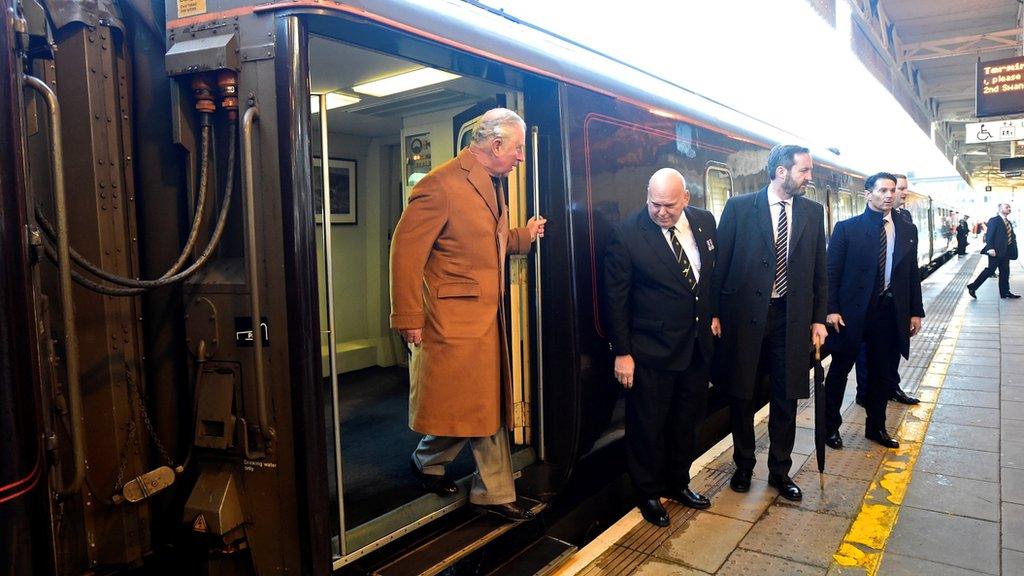
Prince Charles took three trips by royal train last year
A reporter for The Daily Telegraph once said the décor was "closer to a Travelodge than a palace", external.
Mr Davies added: "In truth it is an antiquated system that costs a huge amount in terms of security and protection… I think there's a question mark as to whether it is justified."
Carbon controversy
Prince Harry and Meghan's recent flights to Nice generated an estimated 37.6 tonnes of carbon, which Sir Elton John said he paid to offset.
The couple had previously told their followers on social media that "every choice... every action makes a difference" to climate change.
Royal historian Caroline Aston told the BBC that the younger royals should practice what they preach.
"If you're going to create your own 'woke up' brand of greenness and ethical behaviour, then you do need to dot the 'i's' and cross the 't's' a little bit," she said.
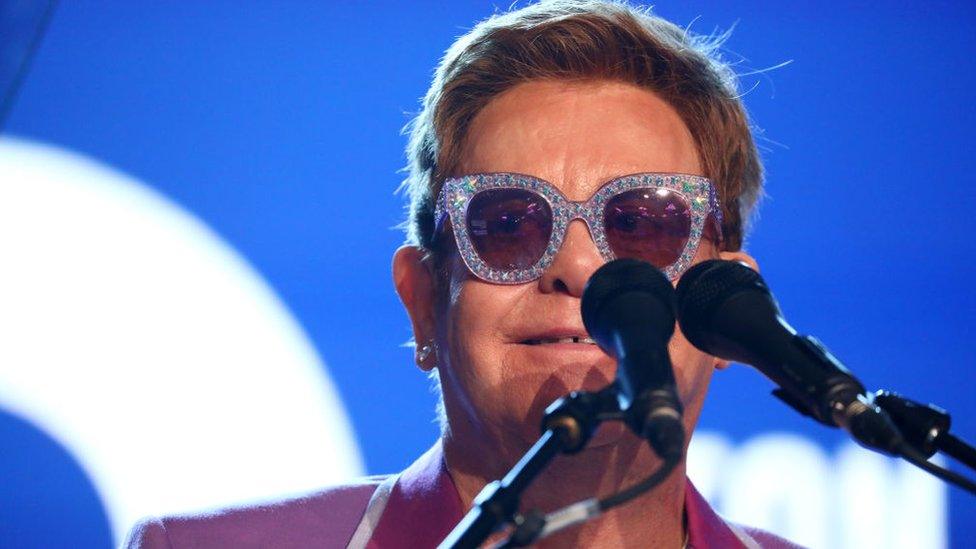
Sir Elton John said he would pay to offset the carbon caused by Prince Harry and Meghan's trip to his French home
Yet claims of hypocrisy when it comes to how senior royals travel are nothing new.
Ms Aston said history was "packed with examples of royalty who have been attracted to the glitzy lifestyle" of private jets only to find "the friend who extended the hand might just have been doing it for their own reasons".
"Now because we finance the Royal Family... they have to be seen to earn our respect. We don't give it anymore purely because of an accident of birth, it has to be earned."
Prince Charles faced claims of hypocrisy in 1991 after making a speech on "monstrous" motorcars only to have his favourite Bentley driven 800 miles to then-Czechoslovakia ahead of a visit.
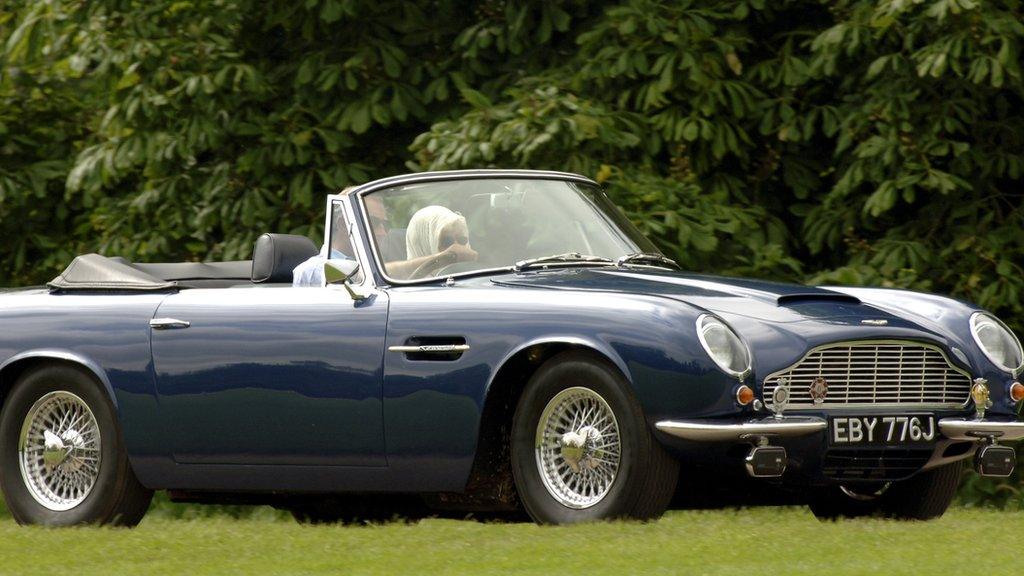
Prince Charles' favourite Aston Martin runs on eco-friendly fuel
In 2015, he was accused of "double standards" by making an 80-mile journey by helicopter just days after urging people to save energy by turning off their lights.
Prince Charles, who takes on the lion's share of royal travel as heir to the throne, now lists measures his household takes to reduce his carbon footprint online, external, including the use of waste from the production of wine and cheese to fuel his prized Aston Martin.
Despite the measures, the royals' latest accounts revealed that the family's carbon footprint from official travel nearly doubled last year, to 3,344 tonnes of CO2.
It is unclear which members of the Royal Family engage in so-called carbon offsetting. The Foreign Office, which organises the royals' official trips abroad, spent £43,635 on offsetting the carbon created by international flights in 2017-18.
A Buckingham Palace spokeswoman told the BBC: "Travel arrangements for members of the Royal Family are made taking into consideration security, efficiency, cost, effective use of time and disruption to others.
"Official overseas travel undertaken by members of the Royal Family is done so at the request of government."
- Published22 August 2019
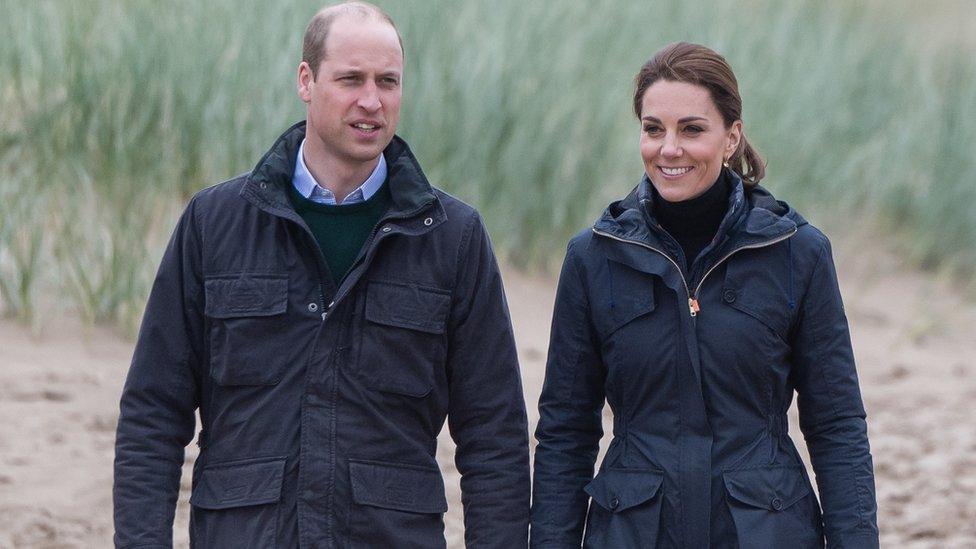
- Published20 August 2019

- Published19 August 2019
